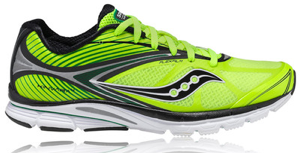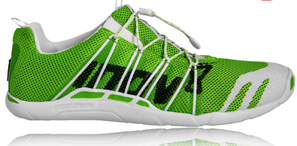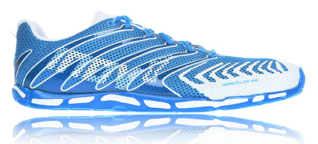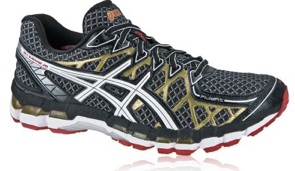Choosing your marathon shoe
Runners are confused by current running shoe recommendations. There is a common belief that to run further we need more cushioning and/or motion control. Although cushioning and motion control can be useful in certain instances, in terms of marathon performance, the key is going to be weight (as light as possible), whilst maintaining comfort.
When considering marathon performance, the most efficient running shoe:
- is the lightest AND
- is the one providing adequate yet minimal protection from an environment to which the foot is not adapted AND
- is the one that minimally alters natural biomechanics.
Several studies have demonstrated improved running efficiency with lighter shoes (and decreased with heavier shoes) (2013-Sobhani, 2012-Perl, 2012-Kram(L), 2012-Handson(L), 2012-Franz, 2011-Hanson, 2011-Jenkins(R), 2008-Divert,2009-Bonacci, 1985-Burkett, 2009-Squadrone, 1994-Flaherty, 1986-Jones, 1985-Martin, 1984-Frederick, 1981-Rlston, 1979-Catlin, 1969-Soule). In general studies have shown that each 100 g at foot level increases your O2 consumption by 0.7%-1%.
Blaise Dubois explains what this actually means for runners over at the Running Clinic website:
Every 100 g on your feet increases O2 consumption by 1%, which translates into a speed reduction of 3 m/min approximately. In real time, during a marathon (for example, at 4hr20 pace), running with traditional shoes weighing 350 g or minimalist shoes weighing 120 g, this amounts to the following: 230 g difference x 2 legs = 460 g = 4.6% of O2 = 13.9 m/min = 3,614 m/4:20:00 (at 6’09’’/km) = over 20 minutes.
However, even though O2 consumption is the main factor in performance, several other parameters will impact your time, such as muscle fatigue caused by shoes to which you are not used to. In order to be efficient in your chosen shoe, you need to be fully adapted to running in it. This would be an argument in favour of training in your chosen race-day shoes, rather than simply saving them for race day.
Find the level of cushioning that you find most comfortable
Fitness levels will likely determine the extent to which gait alters during a marathon run. If you are not particularly ‘marathon-fit’ then your footstrike can change considerable from the start to the end of the race. Tired runners who start a race landing forefoot or mid foot will often end up landing further back on their foot towards the end of a race as they fatigue. This is probably why a lot of runners prefer slightly more cushioning for longer distances. We tend to land more heavily as we fatigue. Different runners definitely like different amounts of cushioning. Luckily, newer shoe models don’t forfeit too much weight, in order to add cushioning. Experiment with how much cushioning you like and find your sweet spot.
My marathon shoe
I encourage performance-focussed marathon runners to search for the lightest shoe they can comfortably wear for their long runs. My current marathon shoe of choice is either the Inov-8 road lite 155, or the bare-X 150. I find both extremely comfortable, even with a fatigued footstrike. Depending on your level of minimalist running experience, there are several types of shoe, with varying amounts of cushioning, flexibility and heel-to-toe drop. Below are some examples of popular, lightweight running shoes. The Kayano (bottom-left) is not lightweight but is pictured for comparison. Weighing 315g!! it is the most popular running shoe in the UK at this moment in time. Kayano wearers could benefit from some serious shoe weight-reduction by transitioning to lighter shoes.







